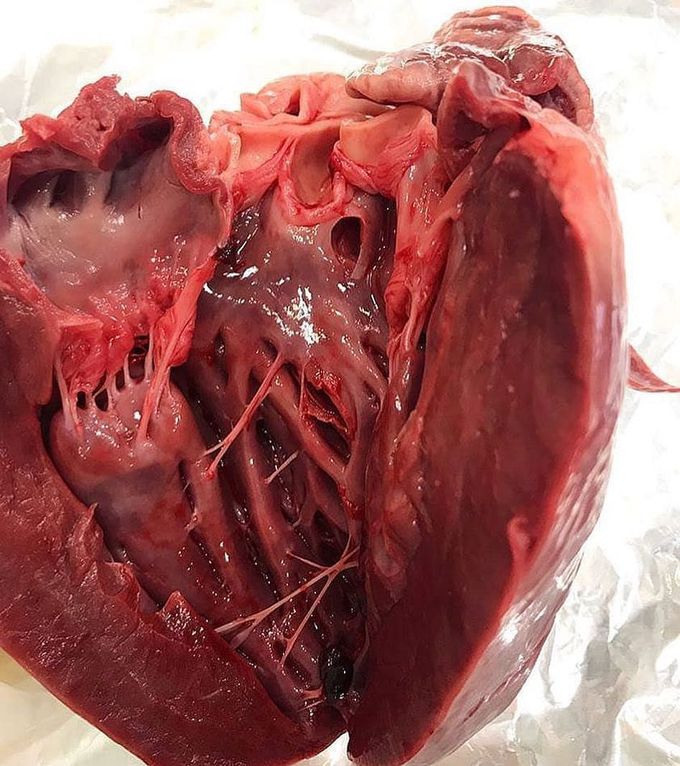


Hypertrophic cardiomyopathy
Having a big heart means having a hypertrophic cardiomyopathy in medical terms! This is a condition in which the heart muscle becomes thick, especially of the ventricles, which is seen very clearly in this picture. The average left ventricular wall thickness in normal adults is 1.1 cm, but there are exceptions. Trained athletes have hearts that have left ventricular mass up to 60% greater than untrained subjects, with an average left ventricular wall thickness of 1.3 cm. The most common cause is hypertension. As many as 1/3 of patients show left ventricular hypertrophy of any degree along with hypertension. In the pathophysiology of hypertrophic cardiomyopathy, the sarcomeres (contractile elements) in the heart replicate causing heart muscle cells to increase in size, which results in the thickening of the heart muscle. In addition, the normal alignment of muscle cells is disrupted, a phenomenon known as myocardial disarray. Myosin heavy chain mutations are associated with development of familial hypertrophic cardiomyopathy, due to a mutation in chromosome 14, shown to effect the encoding of β-myosin heavy chain protein, a major component of the cardiac sarcomere. Symptoms include dyspnea (shortness of breath) due to stiffening and decreased blood filling of the ventricles, exertional chest pain (angina) due to reduced or restricted blood flow to the coronary arteries, uncomfortable awareness of a fluttering or pounding heart beat (palpitations) due to the ischemia to the heart muscle, disruption of the electrical system running through the abnormal heart muscle, lightheadedness, fatigue, fainting (called syncope) and sudden cardiac death. The medical management involves minimizing diastolic dysfunction, reducing left ventricular outflow tract obstruction, optimizing heart failure management, maintaining normal sinus rhythm, rate control and anticoagulation in the presence of atrial fibrillation, and implantation of an automatic implantable cardiac defibrillator in those patients who survive sudden cardiac death. Athletic hypertrophy does not require treatment, they're simply advised to stop exercising for a few months to measure their left ventricle again.

